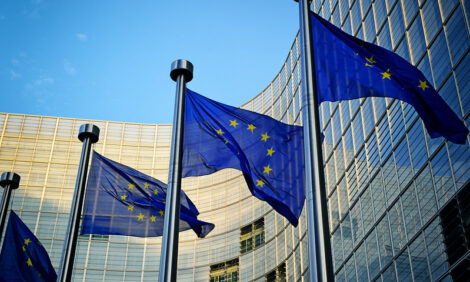



Market Preview: Consumer Outlook & $ Value Critical
US - In this week's "Market Preview" from National Hog Farmer magazine, Steve Meyer writes about the US economy generally.No matter how much we would like to dwell on the level of pork and hog prices over the past two weeks, we must place our attention on the broader economy this week, writes Mr Meyer. Standard and Poor's downgrading of US treasury debt on Friday has set up the equity markets for another rough go. The Dow is down over 500 points or 4.5 per cent as of this writing (8 August).
As the old economist's adage goes: 'Some of my friends say the market is going down, some say it is going up, and I am with my friends'.
The truth is that no one knows how this might play out. There are several reasons for this level of uncertainty. First and foremost, we've never been here before. In our lifetimes, US debt has been nothing but the highest rated. You know the line – 'the full faith and credit of the United States government'. How will the markets, which are actually the collective actions of millions of economic agents, respond to something they have never witnessed before? Sure, the market has been anticipating this for some time with varying degrees of confidence, but anticipating something and acting on it are two different things. Today's sell-off is no surprise since markets almost always fall on bad news. How the news will be handled longer-term is the question.
Second, everything is relative. A bond downgrade means our debt is more risky, suggesting that investors will pay less for our bonds. That's the flip side of demanding a higher rate of interest on those bonds. Risk goes up, so the reward required by investors goes up, too, right? Good story, but so far today, US bonds are higher in spite of the downgrade. The reason is that the United States is still about the safest, most dependable, most secure place to put cash. It's not that our economy is booming or even healthy for that matter, it is just that everywhere else is worse.
The same holds true of the US dollar, says Mr Meyer. A slowing economy may be answered by more cash in the form of stimulus packages or quantitative easing 3 (since QE2 just ended) or something else. Quantitative easing is a government monetary policy occasionally used to increase the money supply by buying government securities or other securities from the market. Quantitative easing increases the money supply by flooding financial institutions with capital in an effort to promote increased lending and liquidity.
More dollars equals less valuable dollars. But the dollar is up today because, again, other currencies are even less dependable. Anyone want to buy a bunch of Euros knowing that Italy and Spain are on the precipice of default and the taxpayers of Germany and Scandinavia are getting more and more resistant to the idea of bailing out free-spending Euro partners?
Finally, there is the fundamental difference between uncertainty and risk. Risk is the possibility of random occurrences whose distribution is known. Knowing the long-term average and variance of a price or an output allows one to make decisions in the presence of risk. A decision maker can state that outcome X occurs with Z probability and build those outcomes and their probabilities into their decision process. Hog producers who look at the historic levels and ranges and probabilities of various margin levels for each month are practicing this very type of decision-making.
Uncertainty, though, is the possibility of an unknown future outcome about which no data are available. It is a blank page that provides no guidance, which makes decision making very, very difficult. Uncharted waters are difficult to navigate and, to some degree, that is where we find ourselves today.
The two factors for pork producers to watch closely, Mr Meyer believes, are consumer sentiment and the value of the US dollar. Consumer sentiment will be under an onslaught of bad news over the next few days and weeks. It will be difficult for consumers, no matter how optimistic, to keep their heads when, in the words of Kipling, all about are losing theirs. And consumers' outlooks on the world are critical to their spending decisions and will impact the demand for meat protein. As was the case in 2008, the pork industry may be in a good place given its smaller exposure to the ups and downs of the foodservice sector. But meat is still the expensive part of the food bill and one that can be cut if times are bad.
The value of the dollar is critical in that it is the ultimate determinant of what our products cost our export customers. In 2008, the dollar index went from 72 in July to 88 in December, before peaking out at 89 in March 2009. That is an increase of roughly 24 per cent. The Korean currency, the won, lost two-thirds of its value during that recession. The peso fell by half. Those kinds of changes could put a hurt on this year's stellar export business. And remember that currency values are all relative. It may be bad in the United States, but it could well be worse elsewhere.
It should be an interesting but possibly scary week.








